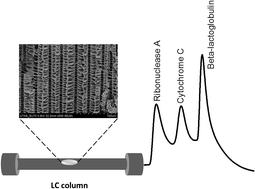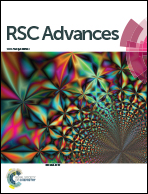Highly ordered monolithic structures by directional freezing and UV-initiated cryopolymerisation. Evaluation as stationary phases in high performance liquid chromatography
Abstract
Rigid aligned polymers were prepared by directional freezing and photo-initiated cryopolymerisation. Poly[poly(ethyleneglycol) diacrylate] (polyPEGDA) and poly(butyl methacrylate-co-ethylene glycol dimethacrylate) [poly(BuMA-co-EDMA)] macroporous polymers were prepared by directional freezing of the polymerisation mixture in liquid nitrogen and photo-initiated polymerisation in the frozen state. The polymerisation mixtures consisted of monomer/s (total monomer concentrations > 25 wt%), dioxane as solvent and 2,2-dimethoxy-2-phenylacetophenone as photo-initiator. The porous properties of the macroporous polymers were tuned by modifying the monomer concentration in the polymerisation mixture and the immersion rate. The results obtained suggest that the freezing of the solvent crystals occurs in the direction of the temperature gradient from the surface of the reactor to its centre rather than in the freezing direction. The aligned polymers were prepared in situ within pre-treated cycloolefin copolymer (COC) tubing and the resulting materials were tested as stationary phases for the separation of biomolecules under reversed-phase and hydrophobic interaction chromatography.


 Please wait while we load your content...
Please wait while we load your content...